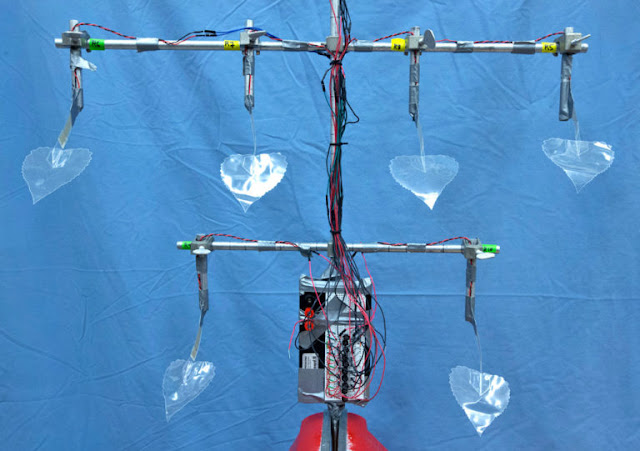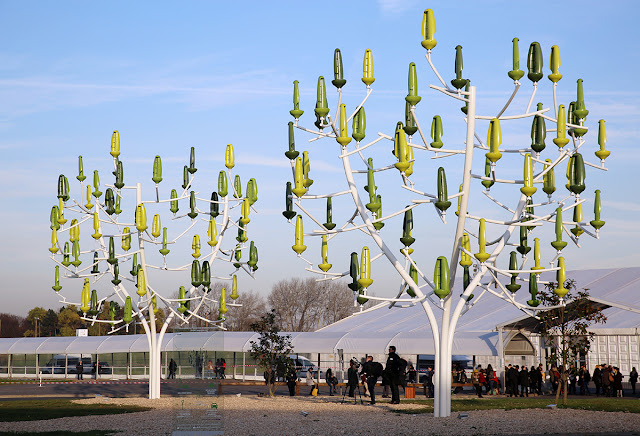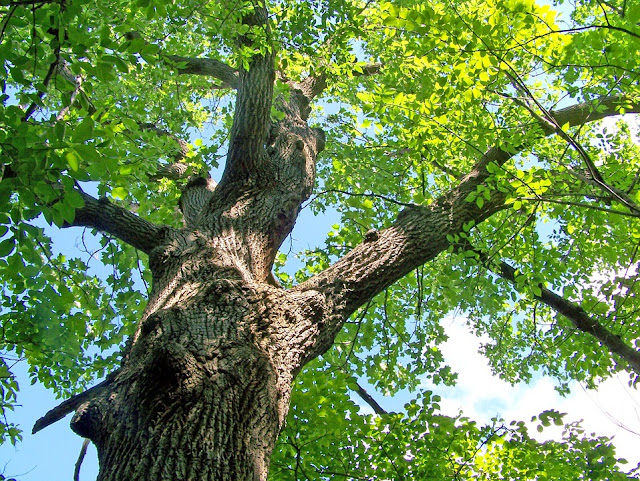 |
| Prototype of tree whose leaves generate electricity Image credit: Christopher Gannon |
 |
| AeroLeaf are commerically available artificial trees that can harness energy from the wind Photo credit: IISD. |
When inquired over email regarding using actual trees to harness energy rather than artificial ones, Dr. McCloskey was quite positive and strongly believes in conserving trees and fitting them with devices that could harness energy for us rather than building artificial and aesthetic ones. In fact, his previous grant proposals included this concept but were rejected. Dr. Henderson, co-author of the study, adds that funding is a highly subjective process and he cannot really decipher why a study with the same basic science would be treated differently at different times. Something for funding agencies to look into!
But how did professors in biophysics work on project of harnessing wind energy? Dr. Henderson says that he does not recognize disciplinary boundaries but thinks of himself as an old school scientist, who is a problem solver and not a micromanager.
The researchers are now eager to work on a new method with a radically different piezo electric material that can deliver better efficiency to the extent of amplifying their current outputs by 100,000 fold and which will enable them to make a practical device. Hopefully, this device will be fitted on normal trees that will not only clean the air for us but also generate electricity. Probably then, people would think twice before cutting a tree!
Reference:
McCloskey, M., Mosher, C., & Henderson, E. (2017). Wind Energy Conversion by Plant-Inspired Designs PLOS ONE, 12 (1) DOI: 10.1371/journal.pone.0170022



4 comments
Demand shoot up as consumers turned on their air conditioning at full power to combat the heat, almost eating up Texas electricity reserves prompting the electric grid operator to declare emergencies.
website
Adiba,
This is true not only in Texas but all across the globe. We spend a lot of energy in cooling our homes when trees would do it for free.
Since people do not value trees for what they are capable of, if we can retain them for generating energy at least, we would still be doing good work for now, right?
Bogus. I am the original inventor of the piezo-electric tree leaf idea, and published my idea in the mid-2000s. It was co-opted by a Cornell researcher and his assistant after reading about my invention online. After a long process involving contacting the Ethics Dept at Cornell and the Dean of the Mechanical Engineering Dept., Cornell gave me attribution on their website. Academics are notorious for lifting ideas from others, including independent inventors. Most of them lack creativity and imagination, so they have to steal others ideas. Pretty sad state of affairs in American science when independent inventors are more creative and savvy than researchers in mega-universities with huge endowments.
Dear Reader,
We would be very happy to credit the idea to you, if you could share with us the attribution and other details.
We would be happy to connect you to the authors of this study.
You can mail us at coffeetablescience[at]gmail[dot]com